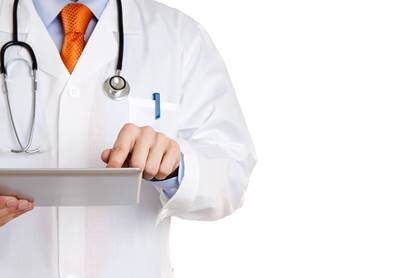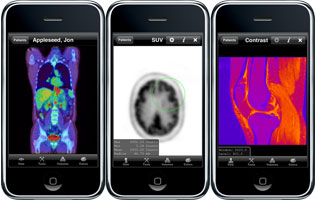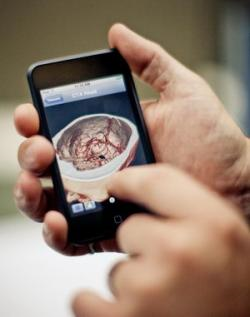Personal Medical Devices - A Healthcare Paradigm Shift
Regardless of how it came about, the cost of medical care and the means in which it is administered has become cost prohibitive, literally to the point of endangering the system. The impacts of healthcare and reimbursement reform coupled with regulatory developments are contributing to the need for a multi-faceted approach to the problems. It is clear that no one thing will solve it, but there are technologies, systems and approaches that when combined do provide effective solutions.
Personal medical devices are one of those categories we have experience in and can speak to. Although still relatively untapped, this growing market segment is being driven by the problems facing the healthcare industry. When combined with patient portals and improved systems and processes these technologies can help make a significant dent in the current healthcare paradigm. Burgeoning smartphone and tablet capabilities are giving rise to a whole new market for personal medical devices with wireless connectivity, joining with a whole new product category called, depending upon who you ask “App-enabled devices” or “App-Cessories”. Over the past year and a half many devices that are attention-grabbing and fun have emerged in the form of toys, BBQ thermometers, fitness monitors and so on, but rest assured, these are just the first wave of products. It is still very early for personal medical devices but they will soon capitalize on these same innovative capabilities, and connect to billions of tablets, smartphones and like devices already in users’ hands.

Juniper Research reports “The next-gen wearable devices market, including smart glasses, to be worth more than $1.5 billion by 2014, up from just $800 million in 2013…… The new Smart Wearable Devices report indicates that fitness and sports wearables, followed by healthcare devices are forecast to dominate the market with a combined market share of over 80% in the final forecast year 2017. However, even though the number of fitness and sports devices bought per year is higher than the number of healthcare devices sold, the health sector will be slightly larger in terms of retail value due to higher price points.”
Wearable personal medical devices enabled by an application on a tablet or smartphone can liberate the computing power of the mobile device leveraging the sensing and control of the device to fabulous end result. Products currently on the market, a host of devices speaking to the tablets and cell phones via wireless connection are becoming commonplace – heart rate monitors for example. However where this is going will be so far beyond these devices that it simply staggers the imagination.
Imagine a wireless personal area network composed of several sensors for a variety of health conditions – monitoring, interacting, and reporting to physicians or care-givers and alerting the patient – all playing together like a symphony and running for months or even years on tiny coin-cell batteries. These coordinated with contextual data and/or actual patient records. Whoa! Now that is powerful! That is a real game changer.
In healthcare, providing timely access to comprehensive patient information is key to improving the patient’s care and lowering costs. Reporting systems have been developed to provide vast amounts of healthcare data but the information is generally inaccessible because it is fragmented across providers and fields. Patients typically visit multiple providers and, although there is progress in this area, no one has access to complete information, but in the infamous words of Bob Dylan, “the times they are a changin'”. Movements such as the Veterans Administration’s Blue Button are also afoot to ensure that patients also have full online access to their medical records.
Currently, most medical devices are wired, stationary monitors with numerous incompatibilities. Each device manufacturer defines its own proprietary data protocols making it unrealistic to correlate across platforms. Untethered devices are perfectly poised in the effort to modernize the current healthcare system. The wireless interfaces used by tablets and smartphones provide universal information transfer protocols which close the gap on these incompatibilities. This alone improves the scalability of medical device monitoring and controls. It makes them easy to use, interoperable and reconfigurable.
Data security becomes crucial when these systems are implemented. Biometrics can be used to prevent unauthorized physical access by others but preventing the hacking of the wireless connection where bad actors can grab data, or worse yet, control a person’s medical devices becomes nothing short of imperative. Fortunately, there are industries that have had to work this out for their own purposes upon which medical device developers can rely for direction.
Better coordinated care, higher patient engagement, more precisely administered treatment, fewer hospital and doctor visit mean that personal medical devices are clearly a valuable piece of the healthcare solutions puzzle.
What medical devices or systems do you envision that can take advantage of these capabilities?
Mobile Remote Patient Monitoring Saves Healthcare Dollars
Remote patient monitoring is a type of healthcare that allows a patient to use mobile medical devices that send data to healthcare professionals. RPM equipment includes devices such as blood pressure monitors for cardiac patients, oxygen content for COPD and glucose meters for diabetics. RPM is frequently used with people who have high levels of medical needs, such as people with multiple conditions, those that are chronically ill and (increasingly) the elderly. More and more frequently this data is automatically sent via the patient’s smart phone, eliminating the need for the patient to remember to actively send it. Because remote monitoring permits physicians to monitor their patients’ medical conditions it allows them to intercede before a situation heightens. The Federal Communications Commission (FCC) this year stated that remote patient monitoring and access to electronic healthcare records could save the healthcare industry $700 billion over 15 to 20 years.
Aligned financial interests make this the perfect time to bring personal medical devices to market. There is a growing need for electronic products that expeditiously receive data sent from other electronic devices and feeds it into applications that change the data into useful information.

Medical Devices as APPlication acCESSORIES
An AppCessory is the combination of an application in a mobile device that activates a physical object. It may require the AppCessory or App-Enabled Device (as Apple has named them), to plug into a port on the iPod, smart phone or tablet or it can use wireless protocols such as Near Field Communication, wifi or Bluetooth to communicate.
Advantage now has 4 years of experience in developing App-Enabled devices for a wide variety of markets, everything from safety instruments to energy-efficiency controls, and of course medical devices as well. Our most recent medical device which is using Bluetooth Smart version 4.0 to communicate to the users mobile device has been successfully certified as a Class II medical device.
As Kevin Tofel, mobile technology writer for New York Times, writes “The new Bluetooth Smart has been specially developed to aid in the development of personal medical devices. Both the Health Thermometer Profile and the Heart Rate Profile were built to enable the wireless monitoring of body functions – in this case, body temperature and heart rate. While the Bluetooth SIG created the technology, its members, consisting of the leading health, medical and fitness device manufacturers, create the specific ways it will be used.”
In order to more rapidly AppCessorize your product we have developed a Bluetooth Smart Core device with a rich feature set. See the details here. Contact us and we’ll help you get your project going!

You Can Rely on Advantage to Design & Build Your AppCessory Products
Call today for a consultation 303 410 0292 OR
